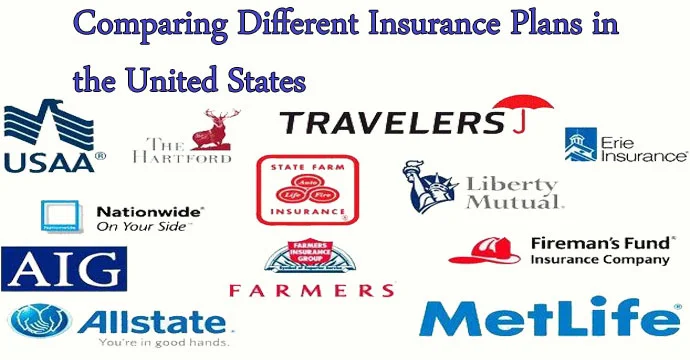Comparing Different Insurance Plans in the United States
In the ever-evolving landscape of insurance, navigating through the myriad of choices available in the United States can be a daunting task. Whether you’re looking for health insurance, auto insurance, home insurance, or any other type of coverage, the choices are abundant. To make an informed decision, you need to understand how to compare these insurance plans effectively. In this comprehensive guide, we will walk you through the essential factors to consider when comparing different insurance plans in the United States.
Types of Insurance Plans
Before we dive into the intricacies of comparing insurance plans, it’s essential to understand the broad categories of insurance available in the United States:
1. Health Insurance
Health insurance is a necessity, and it comes in various forms. You can opt for individual health insurance, employer-sponsored insurance, or government programs like Medicare and Medicaid. Each type has its unique features and eligibility criteria.
2. Auto Insurance
Auto insurance is mandatory in most states. It covers damages and liabilities related to your vehicle. When comparing auto insurance plans, consider factors such as coverage limits, deductibles, and additional features like roadside assistance.
3. Home Insurance
Home insurance protects your property from various risks, including fire, theft, and natural disasters. When comparing home insurance, pay attention to the coverage types, replacement cost, and endorsements like flood insurance.
4. Life Insurance
Life insurance provides financial security for your loved ones in the event of your passing. It can be term life insurance or whole life insurance, each with different features and costs. Comparing life insurance plans requires assessing premiums, coverage periods, and payout options.
Factors to Consider When Comparing Insurance Plans
Now that we’ve outlined the types of insurance available, let’s delve into the critical factors you should consider when comparing these plans:
1. Premiums
The premium is the amount you pay for your insurance coverage. While it’s tempting to go for the cheapest premium, it’s essential to strike a balance between affordability and coverage. Ensure that the premium aligns with your budget without compromising on essential protection.
2. Coverage
Coverage refers to what the insurance plan protects you against. For health insurance, this includes doctor’s visits, hospitalization, and prescription medications. Auto insurance covers damage to your vehicle and liability. When comparing plans, evaluate the extent of coverage and ensure it meets your needs.
3. Deductibles
Deductibles are the out-of-pocket expenses you must pay before your insurance kicks in. A higher deductible usually results in a lower premium, but it means you’ll pay more when you make a claim. Consider your financial situation and choose a deductible that you can comfortably manage.
4. Network
For health insurance, the network of healthcare providers is crucial. Ensure that your preferred doctors and hospitals are in-network to maximize the benefits of your plan. Going out-of-network can lead to higher costs.
5. Additional Benefits
Many insurance plans offer additional benefits. For health insurance, this could include wellness programs and maternity coverage. Auto insurance might offer roadside assistance. Evaluate these additional features to see if they align with your needs.
6. Exclusions and Limitations
Read the fine print of your insurance policy to understand any exclusions or limitations. For example, some home insurance policies might exclude coverage for certain types of natural disasters. Being aware of these limitations can help you make an informed decision.
7. Customer Reviews and Ratings
Research the insurance company’s reputation. Online reviews and ratings from other customers can provide insights into the company’s customer service and claims processing. A reputable company is more likely to provide a smooth and hassle-free experience.
8. Cost of Ownership
Consider the overall cost of ownership, which includes premiums, deductibles, and potential out-of-pocket expenses. Sometimes a plan with a slightly higher premium can save you money in the long run by offering better coverage and lower deductibles.
9. Flexibility
Evaluate the flexibility of the insurance plan. Does it allow for changes in coverage as your needs evolve? A plan that adapts to your changing circumstances can be a valuable long-term choice.
Conclusion
Comparing different insurance plans in the United States is a critical step in securing your financial well-being. Whether it’s health, auto, home, or life insurance, each type requires careful consideration. By examining factors such as premiums, coverage, deductibles, networks, additional benefits, exclusions, and customer reviews, you can make an informed decision that suits your needs.
Remember, the right insurance plan provides peace of mind and financial security. Take your time to compare, analyze, and select the plan that aligns with your unique requirements.

